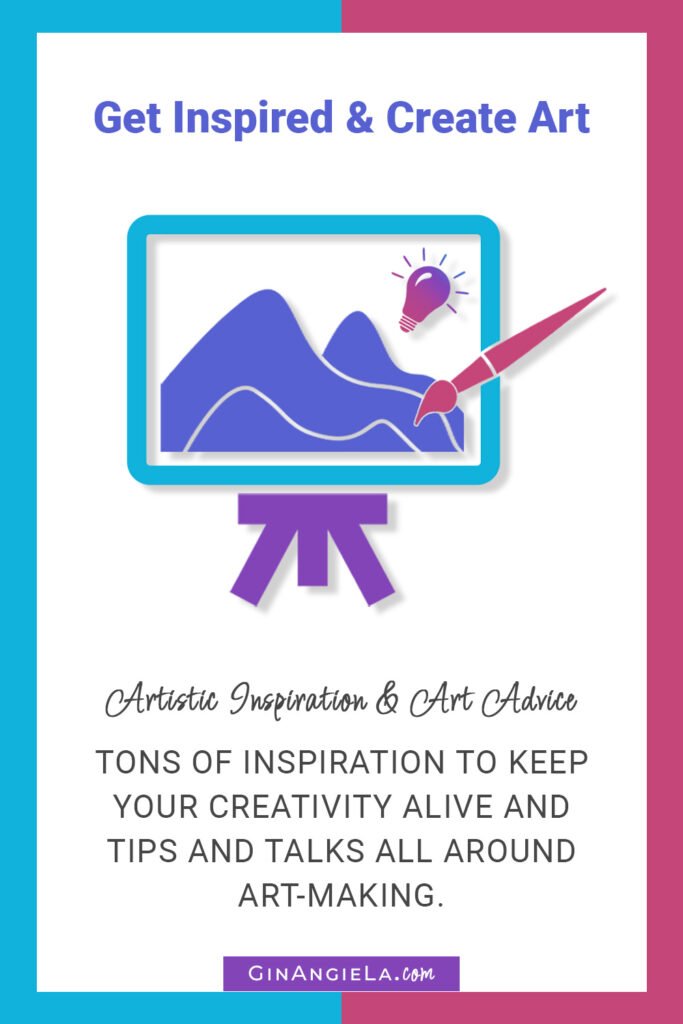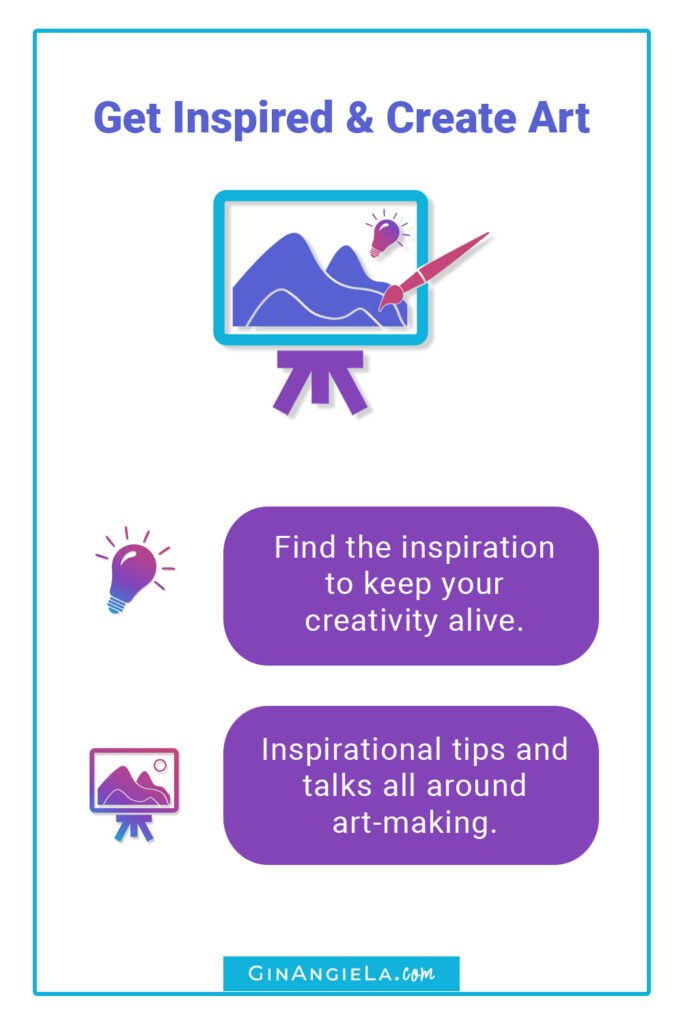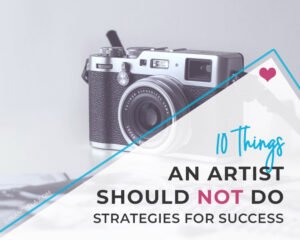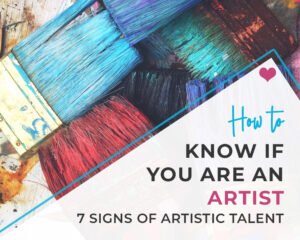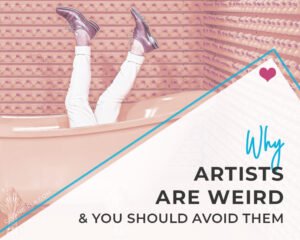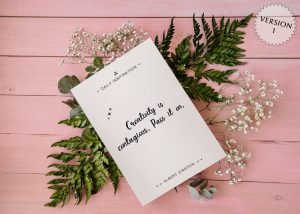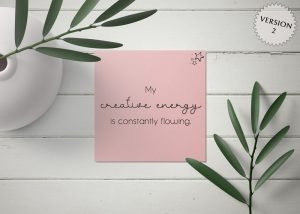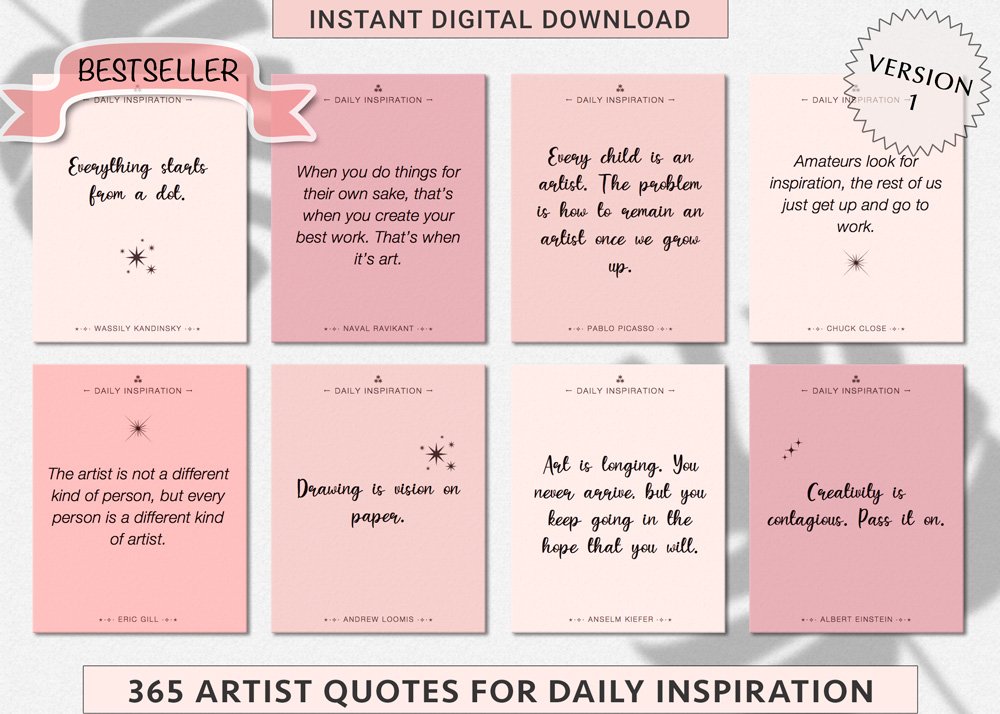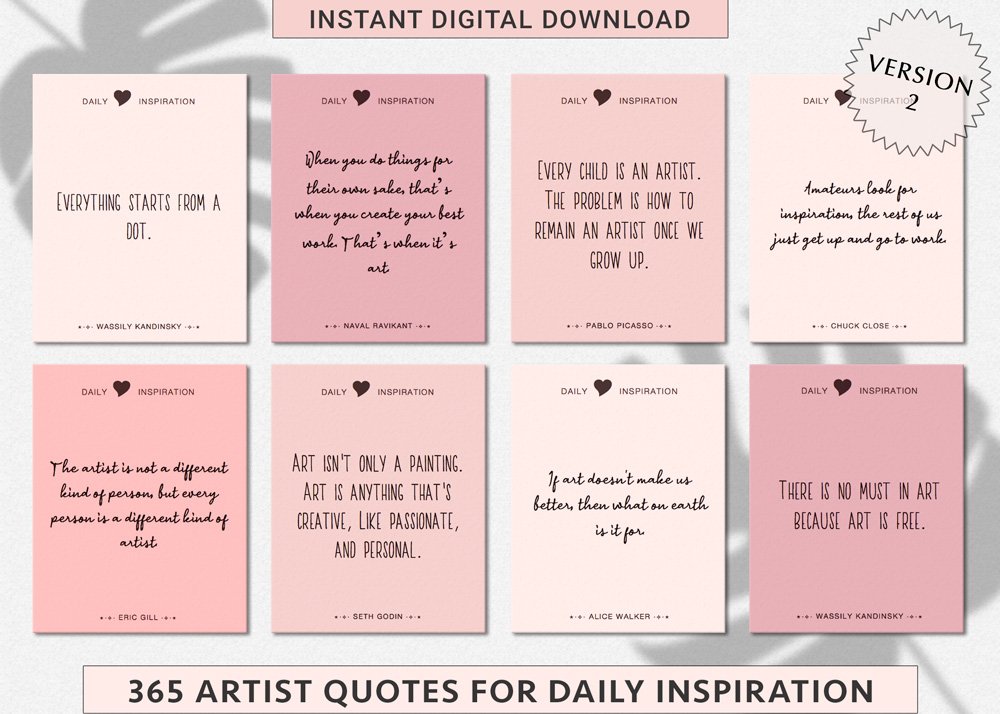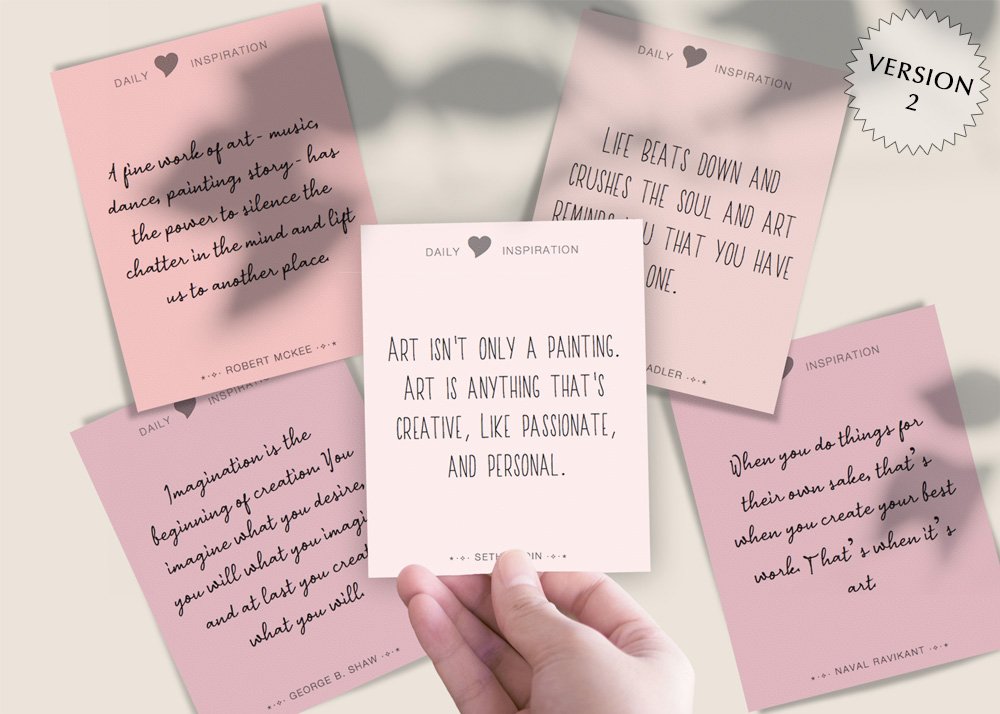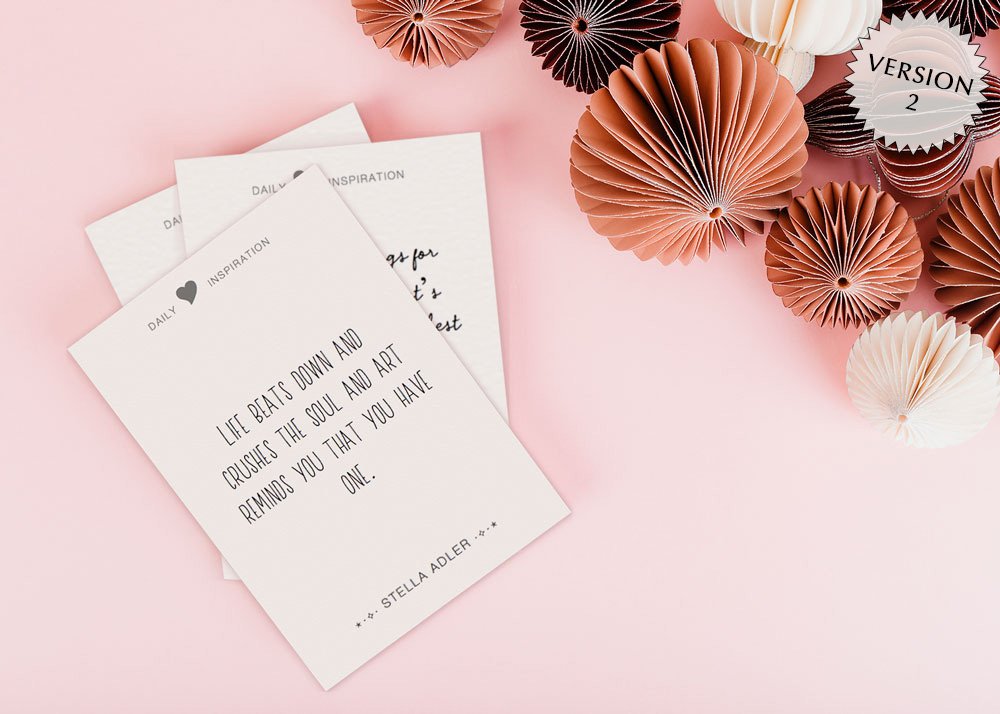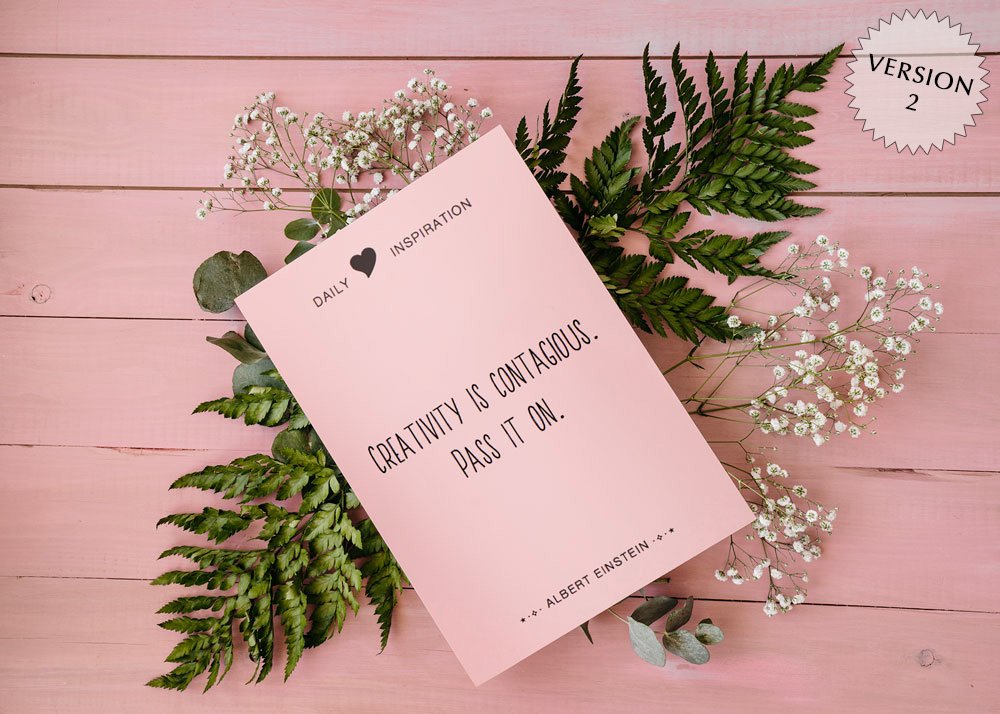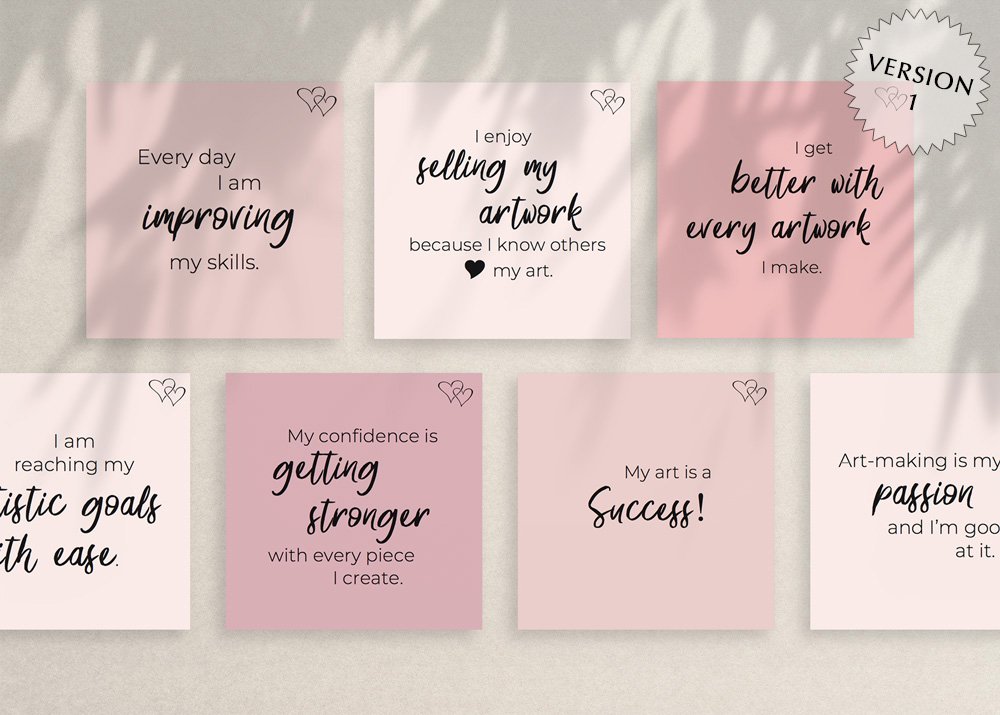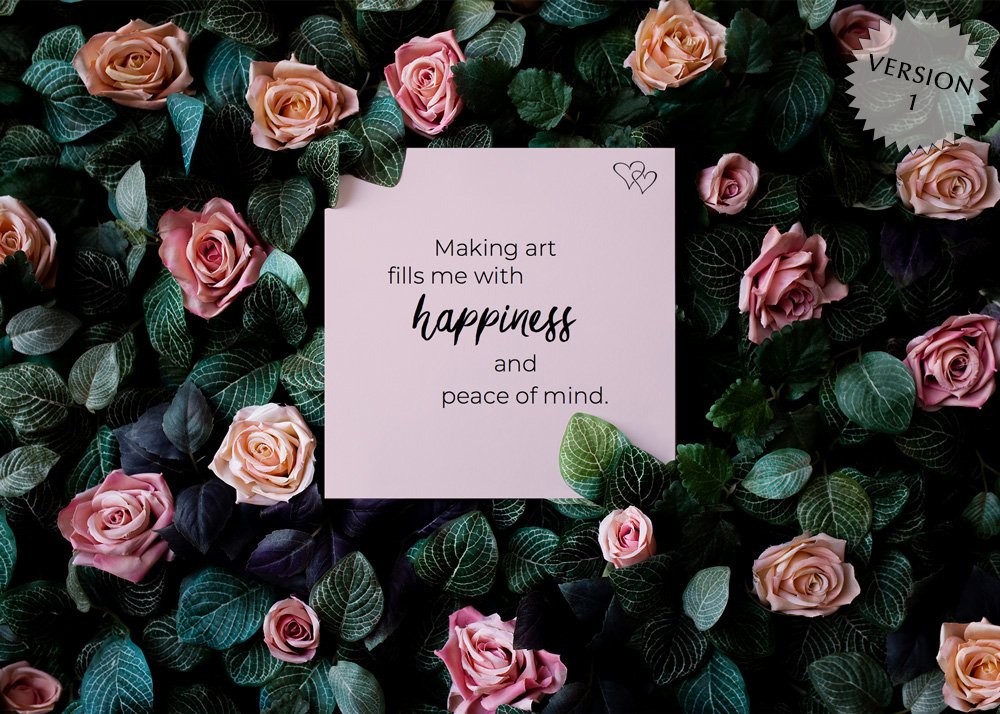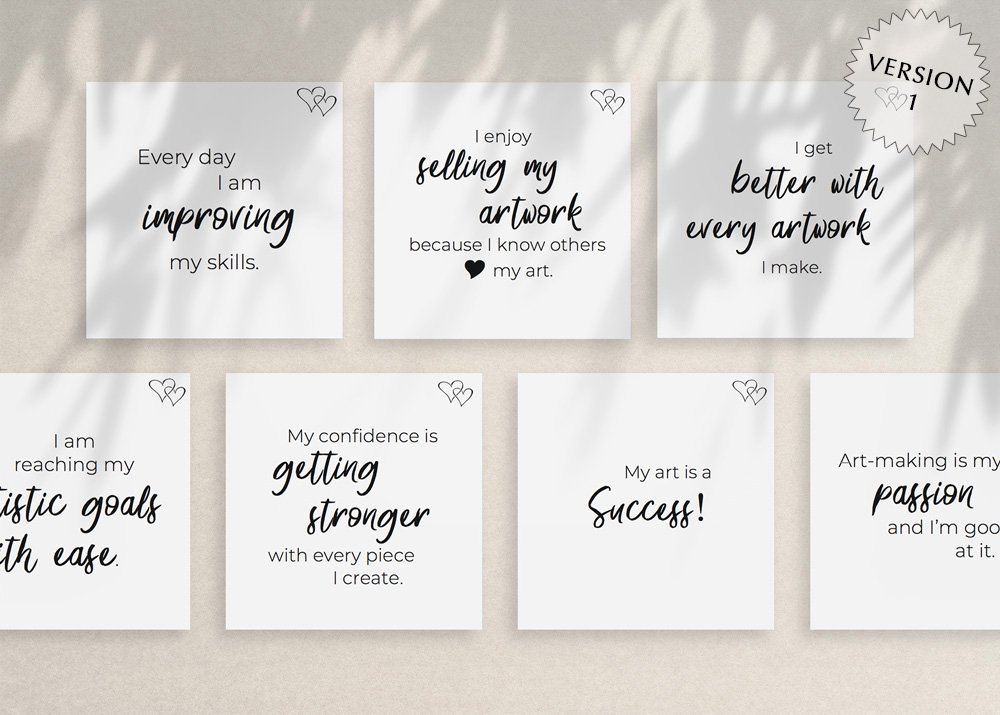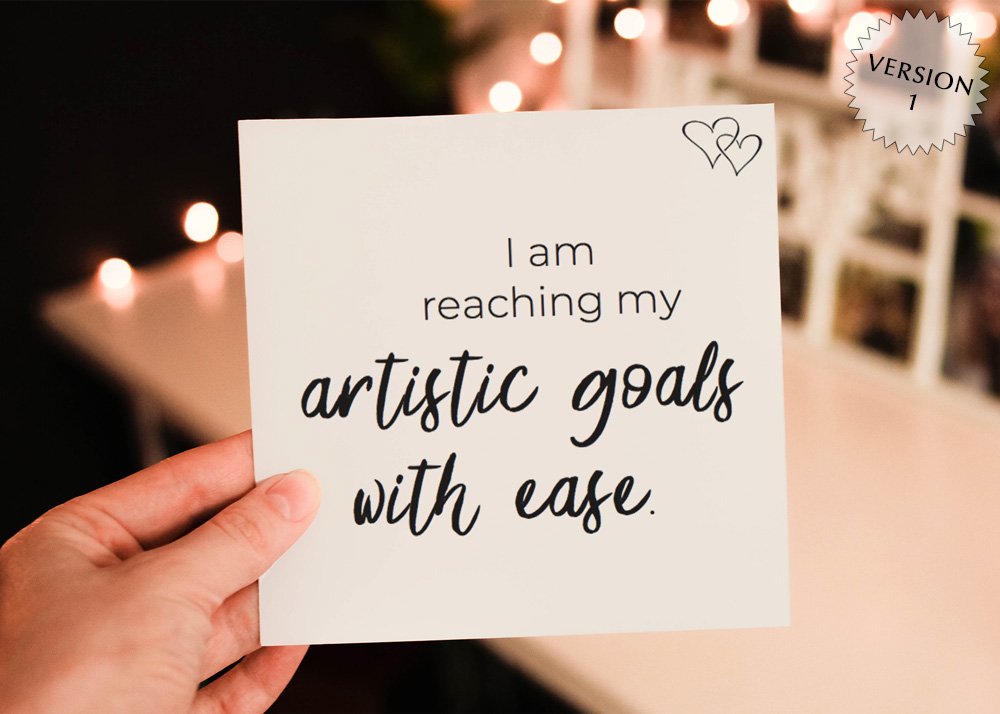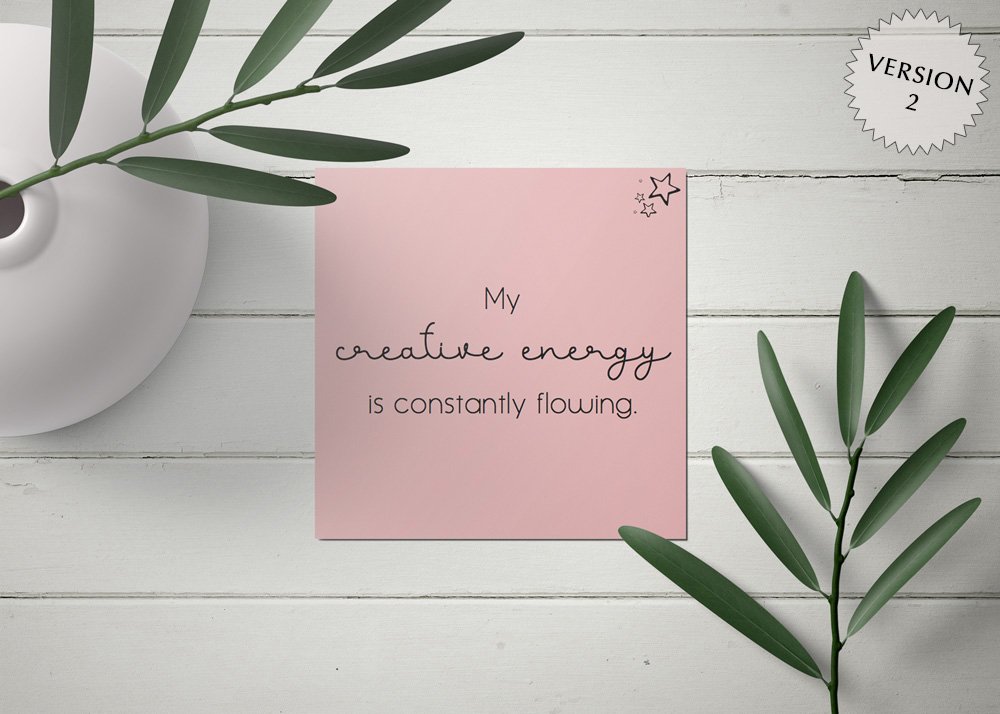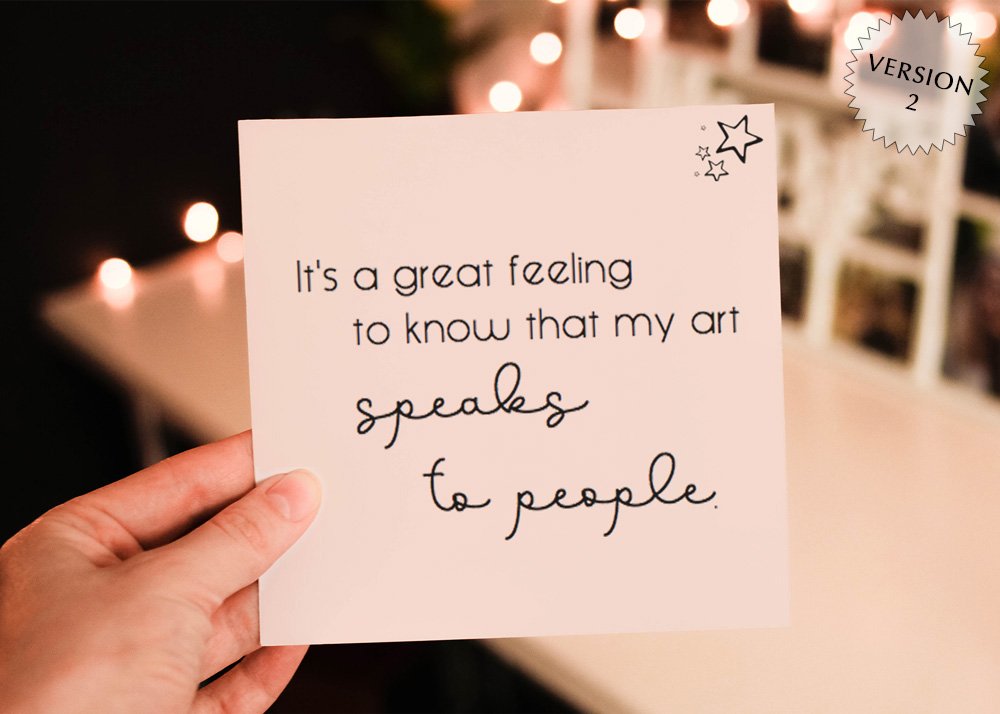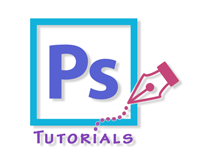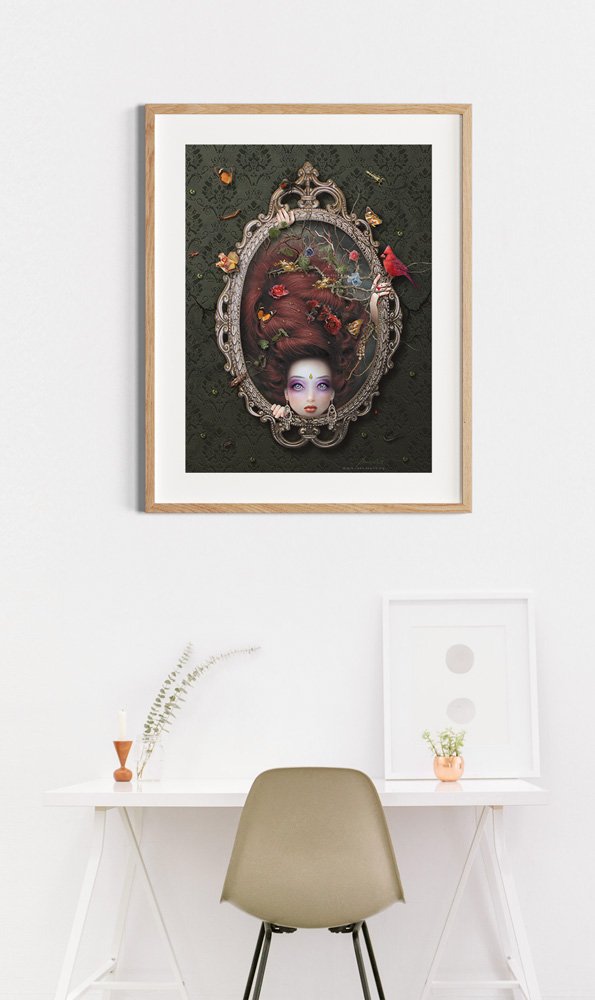Get Inspired & Create Art
Popular 'Art & Inspiration' Posts
All 'Art & Inspiration' Resources
Get Inspired

Find the inspiration to keep your creativity alive.
Create Art

Inspirational tips and talks all around art-making.
The Making Of

Check out the creative process and meaning behind my artwork.
Featured Products
Frequently Asked Questions
What does inspiration mean in art?
What is the meaning of inspiration?
The meaning of inspiration in art is derived from the Latin word inspirare, meaning “to breathe into.”
This artistic inspiration is defined as an “unconscious burst of creativity” that happens to visual artists, as well as in literary, musical, and other artistic activities.
What is artistic inspiration?
The concept of artistic inspiration dates back to ancient history.
In Greece, an artist’s inspiration was also known as “enthusiasm.” That’s because the Greeks believed it was a gift of the muses, as well as of the gods Apollo and Dionysus.
Christians thought it was bestowed by the Holy Spirit.
Later on, in the Romanticism period of the early 19th century, people still believed that inspiration was a divine or mystical offering that an artist could receive because their soul was attuned to the mystical “winds.”
How do artists find inspiration?
While inspiration is not frequently studied in modern psychology, people tend see it as a combination of external and internal processes nowadays.
The sources artists eventually draw their inspiration from can be many. It totally depends on the individual.
Maybe you as an artist feel inspired by something ‘higher’. But there are also common everyday life things that provide inspiration for many artists.
Here are 5 examples of sources of inspiration that artists use to derive their ideas:
What are the 5 main inspirations for artists?
#1: Their own life
For many artists, artistic inspiration comes from their own life. A lot of visual artists like to draw or paint people that are dear to them.
Some artists paint their pets or other animals they love. Other enjoy drawing landscapes, other elements of nature, or things they see around them.
#2: Nature
Nature has been a huge source of inspiration for all kinds of artists. Poets write about it. Singers sing about it. And visual artists draw and paint it.
There are so many fascinating shapes and colors in nature that account for a never-ending source of artistic inspiration.
#3: Other artwork
Looking at other artists’ work is another great way to get inspired and learn from them. Have a look at the old masters or study contemporary art.
The more you look at other works and see what techniques those artists use and what message they want to convey, the more you learn for your own practice.
But – don’t make the mistake of getting jealous of other artists!
#4: Other arts
Don’t miss out on getting inspired by other arts as well. There’s lots of inspirational potential in books, movies, music, and so on.
Take some time to read, watch a good movie or listen to your favorite singer. Once those ideas have seeped into your subconscious, they will inspire you to new creations.
#5: Keep creating
Last but not least, artists find inspiration in their own work. Just sitting down at your desk and putting the stylus to the tablet, is one of the best ways to keep your creative juices flowing.
Instead of waiting for inspiration to strike, lay down some strokes or do some doodles and sketches. You’ll quickly notice that inspiration comes from doing the actual work.
In case you are ever feeling lost as an artist, read here how to rekindle your creativity!
How do I get inspiration for my artwork?
Let’s answer this question by starting with a quote by amazing artist Chuck Close:
“The advice I like to give young artists, or really anybody who’ll listen to me, is not to wait around for inspiration. Inspiration is for amateurs; the rest of us just show up and get to work. If you wait around for the clouds to part and a bolt of lightning to strike you in the brain, you are not going to make an awful lot of work. All the best ideas come out of the process; they come out of the work itself. Things occur to you. If you’re sitting around trying to dream up a great art idea, you can sit there a long time before anything happens. But if you just get to work, something will occur to you and something else will occur to you and something else that you reject will push you in another direction. Inspiration is absolutely unnecessary and somehow deceptive. You feel like you need this great idea before you can get down to work, and I find that’s almost never the case.”
Where do artists get their ideas and inspiration?
As Chuck Close puts it, the most important thing for artists to get inspired and create art is to put in the work every day. Start with the desire to progress and get better, instead of waiting for a magical moment to happen.
Then, while you are painting and drawing and creating, inspiration will strike you in the process. Begin with an idea, develop it further, and just see where it takes you.
Don’t be too focused on the end result, simply enjoy creating art as you go along.
Remember the good old saying: It’s the journey, not the destination.
Do you feel like suffering from artist block? Check out our post on how to overcome the fear of creativity to get your artistic inspiration back!
How do artists get inspiration?
Besides putting in the work every day, here are three more tips to help you get inspired as an artist:
3 Tips to help artists get inspired & create art
TIP #1: Take time exploring different art styles and media
There is always room to get new inspiration and ideas by looking at different art styles and media.
For example, if you have so far been creating surreal art, take a look around and explore lowbrow art, pop surrealism and pop art.
You can also broaden your artistic skills by studying new techniques, such as low-key and high-key value art.
There are so many ways that can help you open up your horizon to new possibilities!
Try out different art media as well. If you’re used to working with a drawing tablet at your computer, create a mixed media piece where you combine something tangible with digital editing.
Experiment with different subjects as well. Deliberately practice stepping out of your routine! After all, you never know if you don’t try. ʕᴖᴥᴖʔ
TIP #2: Stop comparing your art to other artists’ work
When you create art, focus first and foremost on your ideas and what message you want to convey through your artwork. In fact, storytelling can improve art considerably.
Don’t look too much at what kind of art is trending on Instagram or Pinterest. Don’t try to jump on the bandwagon by creating that kind of art that currently gets the most likes and shares.
This won’t help you on your personal journey.
Always value your own work and the point you are at in your own artistic career. Your creativity and uniqueness and how it reflects your personality is what determines the true value of your art.
Concentrate more on what you feel when you are creating a certain piece of art. Does it feel good? Then simply continue working on it, no matter how it may be received by an audience.
Remember: you create art for yourself, and for no one else!
TIP #3: Don’t strive for perfection
It is not easy to stop being an art perfectionist, but the probably worst thing you can do when you try to get inspired and create art is attempt to make it perfect.
Nobody is perfect. And there’s noting like perfection here on earth. I believe that earth was made to let us experience imperfection.
Because no matter how good and talented you are, there is always room for improvement.
Trying to make your art perfect will only cause you to get anxious about not achieving it. And this strung up state of mind will prevent you from creating your best art. Here’s why your art doesn’t have to be perfect and why you should embrace mistakes.
Spend some time contemplating what inspires you. What exactly is it that you find inspiring? Is it a certain style of art? Is it a specific set of colors? Is it a particular subject matter or message behind a work?
Once you’ve worked out what it is that appeals to you, you can use this as a starting point.
What would be your inspiration for an original artwork?
The originality of an artwork springs from taking whatever inspiration you have and elaborating on it until it becomes entirely yours.
Oftentimes, you see artists revisiting the same concept over and over again. This is because they’ve found something that inspires them from the bottom of their heart, and now they expand on it as much as they can.
This is what makes them the most happy and content at that moment in their life, and it’s also part of what makes their work recognizable. These are also some of the reasons why artists work in series.
Why is art so inspiring?
What inspires the work of art?
There are many sources that may inspire an artist’s work. However, one predominant and ubiquitous source of inspiration has always been nature.
Throughout history, nature has played a major role in inspiring artists of all genres. Just think back to the prehistoric cave drawings. People used to carve animals and other things in their natural environment in stone.
Why is nature so inspiring?
The reason is that nature provides tangible references that we are in touch with all the time. Nature is where life begins.
From the moment we are born, we are related to nature. As we grow up, we explore our surroundings. We get to know what sand and grass feel like to the touch, we play with pets, observe butterflies and birds flying by, and climb on trees.
No matter where you live, there are always elements of nature.
Visual art literally comes from nature. The media traditional artists use are directly from nature: paper, wood, water, pigments, graphite, charcoal.
With the invention of computers, we now can create art without these media. However, the best digital art hardware, such as drawing tablets and styluses, as well as creative software take their inspiration from nature and try to simulate natural media as closely as possible.
Why is art so influential?
Art is so influential because it inspires our lives. Our thoughts. Our actions. Our passion. Actually, the importance and influence of art stem from our need for art in our lives.
Art can tell narratives from different angles. It allows you to create unique storytelling pieces that reflect your personality, your own experiences, challenges, culture, or viewpoints. Follow these 5 steps to make storytelling through artwork effective.
You can use imagery to express your inner world. Art can serve as a creative and intuitive outlet that gives the viewer a glimpse of your feelings, dreams or fears.
Art also has proven positive effects on our mental health, because it allows you to channel your fantasies and emotions through the art you create.
Creating art can also be a form of spiritual practice. You can get completely lost in creating a work, forget time and space around you, while being fully aware of the present moment.
More suggestions for supporting your physical, mental and physical well-being in 10 lifestyle tips for artists to stay healthy long-term.
Why does art make us happy?
All these things naturally explain why art makes us happy.
But how can you stay happy making art?
The best way is to create every day. If you set aside some time every day to do something creative, it will quickly become a habit in your life.
15 minutes are totally sufficient for a start. Doodle something on a piece of paper, swipe your brush over the canvas, or move your stylus over the tablet.
Once you get started, you’ll notice that you have more creative ideas than you believed possible!
Another way to stay happy creating art is to keep a journal. You don’t need to fill each and every page with long recounts of your life. Oftentimes, some quick bulleted lists are enough to keep your creativity alive and yourself happy.
For example, at the end of a day, you can create a list of all the things that made you feel good that day. You can also write down all the things that made you feel grateful and appreciative.
Each day try to find some things that you love. Then pick one thing every day that particularly engaged your attention. Do a quick sketch in your journal. If you feel like, elaborate it later on in your favorite digital art software.
By starting with something you truly enjoyed, you’ll find it easier to get inspired and create art.
Plus, you will remember your happy moments and feel that you genuinely lived them! It’s a great experience that can enrich your life tremendously.
How does art inspire creativity?
Whenever we talk about creativity, art is often the first thing that comes to mind. In fact, art, inspiration and creativity are closely related.
We get inspired to create art, which leads to more inspiration to do more art and to be more creative. It’s a circle.
Art naturally causes us to feel something: interest, awe, amazement, admiration. But it may also be dislike, disgust, repulsion, or simply indifference.
Whether positive or negative, art always arouses an emotion. And that is good.
Viewers may be stunned by an artwork and the insights it reveals into the artist’s mind. On the other hand, they may also call your artistic skills or intent into question. That’s totally fine. Art is not only meant to inspire, but also to provoke and challenge existing norms and preconceptions.
On that note, it is important to not take rejection personally. If you are struggling with the idea of being rejected, read these 6 techniques for artists to get over rejection and learn how to build creative confidence.
But what exactly gives art the ability to stir all these different feelings and opinions? Why is art capable of inducing a change of perceptions and conventions?
First of all, art embodies so many things that our daily lives are devoid of. There are no rules in art, no limits, and no restraints. Art is free, bold, and upfront. It is expression in a pure form that doesn’t intend to measure up to anyone’s expectations.
Art is for art’s sake. The sole purpose of a work of art is the self-expression of the artist who creates it.
The best art is actually that which makes us question its value and purpose. This is how we are spurred to new creative planes and get inspired to create new art.
How does art influence your life?
Art has such a strong influence on our life because it allows us to jolt our perspective into something new.
We turn to art for inspiration because oftentimes it’s the easiest method to change our way of thinking and looking at things.
Even though the initial influence of an artwork on your life may be small, it has the potential to plant a seed in your mind that can grow into something new and big.
Plus, there is artwork that tells a story that influences our life. We can walk into that story and escape our reality for a short moment in time. While exploring the artwork in our mind, we can experience a different reality in the safety of our inner world before coming back to the real world.
How do you inspire people in art?
Art is everywhere. It’s all around us, even if we’re not aware of it.
If you want to get into art, you need to open your eyes to the beauty and splendor that can be found in every spot of our world.
How can art inspire a person?
Art has the ability to speak to the person experiencing it. That’s what makes it so powerful. While most people find it easy to admire beautiful artwork, many are anxious about creating art themselves.
Why? Because many of us believe that we “aren’t creative” or we are just “not talented enough” to create art. A great way to counter such negative, self-sabotaging beliefs is by using daily affirmations for artists.
However, there are many diverse ways to make creating art a part of your daily life.
“What do you think an artist is? … he is a political being, constantly aware of the heart breaking, passionate, or delightful things that happen in the world, shaping himself completely in their image. Painting is not done to decorate apartments. It is an instrument of war.”
― Pablo Picasso
What inspires people to pursue art?
It’s important to inspire people in art because art offers a tool for self-expression. It’s also a means to communicate and to start a dialog with the world around you. Even though you create artwork personally, it often has a non-personal quality. That means art may be bold and uncompromising, but it still leaves room for its audience to contemplate.
Once you’ve found your voice as an artist and are excited to say something through your art, it gets easier to inspire people in art and also get them excited about creating art themselves.
As you try to inspire people in art, it’s important to also let them know that they don’t need to be perfect right away. That’s also part of the process. We all like things to work really well from the start, but that’s not how it goes. We all start from somewhere by just making something. Then we kind of experiment and grow in the process.
However, moving on from there can make you become a powerful artist because you’ve chosen to create something that is entirely yours.
In what ways can art inspire creativity?
We all know some things that hinder our creativity to flow freely. For example, there is that inner voice that tends to bring us down and prevent us from creating. In fact, we all have that inner critic inside of us and it is not easy to stop judging our art.
However, when you inspire people in art, you can also help them keep that inner voice positive.
It feels good to know that we are not alone. Every artist has their struggles, and we all might find it difficult at times to put things that we’ve created out to the world because it reflects our innermost feelings.
What can we do if fear keeps us from being creative?
The first thing is to acknowledge your fears. It’s important to understand that your fears mean well with you. They are trying to protect you from harm. Apart from that, here are 10 more lifehacks to overcome the fear of creativity.
Once you’ve made peace with your fears, you can move on from there and ask yourself what exactly it is that you want to convey with your art. What is your reason for being an artist? Why did you choose to follow your calling to be an artist in the first place?
Focusing more on your purpose of creating art can help you take some pressure of yourself. More often than not, we tend to compare ourselves to other artists and end up thinking that we’re just not good enough yet. A big part of keeping our creativity alive is getting rid of this competition mindset.
That’s why it’s vital to remind yourself that you are creating art for yourself. You do what you love doing, and there will always be people out there to support you. (Here are 4 ways to emotionally support an artist!)
Focus on the good that art-making gives you and nurture your inner artist. This is probably the best way to keep your inner voice positive and let art inspire your creativity.
How do you inspire people to create the art they love?
Perhaps, the best way to inspire people to create the art they love is to remind them and yourself that your time on this planet is limited. That’s how it is. Life isn’t eternal. And you shouldn’t waste your time worrying about what other people may think.
You inspire people in art by encouraging them to practice positivity and to value themselves at the point where they are at with their art.
Creating art is not about being better than others, it’s about free self-expression, self-discovery, and self-acceptance.
That way, inspiring people in art is one of the best things you can do to contribute to mental health and self-care! Enjoy your creative journey! xx
What is an artist’s inspiration called?
A common synonym for artistic inspiration is the Muse.
In ancient Greek religion and mythology, the Muses were seen as an artist’s source of inspiration. They were thought to be the inspirational goddesses of literature, science, and the arts. The Greek word “mosis” means desire and wish. The word museum also comes from the Greek Muses.
Greek mythology knows 9 muses, the daughters of Zeus and Mnemosyne.
The Greek epic poet, Hesiod, describes these nine Muses in The Theogony:
- Calliope: Epic Poetry, depicted with writing tablet, stylus and lyre – Voice of Beauty
- Clio: History, depicted with scrolls, books, cornett, and laurel wreath – Proclaimer
- Erato: Love Poetry, depicted with a cithara (kind of Greek lyre) – Loveliness
- Euterpe: Music, Song, and Lyric poetry, depicted with an aulos (kind of Greek flute) – Pleasing One
- Melpomene: Tragedy, depicted with tragic mask or sword – One Who Sings
- Polyhymnia: Hymns, depicted with veil and grapes – Sacred Singer
- Terpsichore: Dance, depicted with lyre and plectrum – Delighted by Dance
- Thalia: Comedy, depicted with comic mask or shepherd’s crook – Cheerful One
- Urania: Astronomy, depicted with globe and compass – Heavenly Persona
These female deities were believed to give men the power to create. (There weren’t any female artists yet in ancient Greece.)
Each artist had his own muse of inspiration. The meaning of poetic inspiration was that the muse would give the poet a laurel branch, the voice to sing their verse and special knowledge of the past and future.
What are sources of inspiration?
Sources of inspiration can be found all around us if we just take the time to look. More often than not, we are too busy to truly appreciate everything that life is offering us.
What are examples of inspiration?
Everything can inspire, virtually. From the smallest flower in nature to the tallest architectural structure in a city.
The most important thing is, however, that you are on the lookout. As soon as you are being present and in the moment, you can find inspiration in all kinds of things – big or small.
What is an external source of inspiration?
Everything that is around you can become an external source of inspiration for your art.
Be it a natural landscape you walk through, a sunset you admire, a book you read, a movie you watch, or some music you listen to.
On the other hand, there are also internal sources of inspiration: your imagination, your fantasies, your dreams, and even your fears. On that note, it is also possible to get inspiration from yourself.
How can you be a source of inspiration for others?
In case your creative juices should ever run dry, here are 12 sources of inspiration to rekindle your creativity:
12 Sources of inspiration for artists
1. Experiment
This one is important. We, as artists, need to experiment with different styles and media to draw our inspiration from. This will serve your creativity on so many levels.
If you are a digital artist, you can try out some forms of traditional art. But even when you stay in your realm, there are so many skills digital artists need that you can elaborate on.
Stay curious and learn about new techniques and perspectives of creating art. And even if you don’t discover a new passion, you will find new inspiration and grow as an artist.
Give it a go and see what happens!
2. Daydream
Sometimes it’s good to just let your subconscious take over. Let your imagination go wild. Whether you’re going for a walk in the park, ride on the train, or just sit outside on a sunny day, let your mind wander and let go of the control we use to keep.
You mind will lead you to new realms and come up with new possibilities. Maybe you’ll see a vision before your inner eye that inspires you to create your next artwork.
So daydream a little, and get inspired by your inner world.
3. Read
Get your hands on a good old book and start to read. This is a piece of advice that is as valuable in our modern day and age as it was in the past.
Whether you like long novels, short articles, poetry or quotes, they all may be sources of inspiration.
Reading opens your mind to new perspectives and adventures. The written words can evoke pictures in your mind that lead your creativity to new realms.
4. Journal
Many creatives love to keep a journal. Journaling doesn’t mean you need to write detailed accounts of what’s going on in your life every day. Scribbling a few lines or some notes is totally sufficient to make it work.
A journal can help you think with more clarity, reach your goals, contemplate your life, and so much more.
Try out journaling for a certain period of time, test the waters, and then stick with what works for you.
5. Pause
Take a break from life. Take time to restore your energy.
Resting is part of the creative process and it has the potential to really boost your creativity. It allows your body and mind to relax and new ideas to flourish.
If you don’t have too much time during the day, take a short nap. Even short rests can replenish your energy stores big time!
6. Exercise
To stay creative and keep the ideas coming, not only your brain needs to be active but your body, too. If you’ve been sitting in front of your computer all day long, make sure to get some sort of exercise.
You don’t need to train for the next Olympic Games, it’s enough to workout like a fine artist. (ᴖᴥᴖ) That can mean going for a walk in the park, a quick jog, or playing some ball game.
If you can, go outside, breathe some fresh air and let your body and mind recharge their batteries. More things you can do to support your health can be found in 10 lifestyle tips for artists to stay healthy.
7. Meditate
Make some time during your day to sit still and calm your mind.
Find a quiet place and just focus on your breath, while letting your thoughts shift away from reality. Instead of thinking, just try to listen to the silence.
This is when new ideas will start flowing in because your mind now is calm and open for fresh creative input. Meditation is a real creativity booster and helps artists reconnect with their inner source of boundless inspiration.
8. Quotes
No matter how short they may be, quotes of other artists can reveal powerful truths to us and be a huge source of inspiration we can draw from a long time.
Have a look at the inspirational quotes of the great artists. If you find something that resonates with you, write it down and place it somewhere you see it.
That way you will be able to refuel your creativity time and time again.
Stay inspired all year long!
9. Travel
When you leave your country to get to know new and amazing places, experience different cultures, meet interesting people and see the world’s wonders, this is when you’ll get inspired to the fullest.
You will become more open-minded, expand your horizons, and learn new and surprising things.
When you’re back home, you will have lots of new ideas and experiences to put into your art.
10. Your Achievements
If some day you feel discouraged and start doubting your artistic skills, take a look at your past achievements.
You have already created so many beautiful works, which might have started off with just a small idea and developed into something magnificent.
Remind yourself that there are still great things ahead of you and let your achievements serve you as a reminder of what you can accomplish as an artist.
11. Daily routines
Implement motivational routines in your day. For example, start your morning with a healthy breakfast, some exercise and maybe a short session of meditation.
Make some time for yourself to reinforce your positive mindset and to resume your artwork with new confidence and optimism. Here are 8 good habits every artist should adopt.
12. Positive vibes
Try to surround yourself with positive people who inspire you.
Even though it may be hard, but for your mental health and well-being it is better to cut ties with those people who are negative, constantly complaining and in a bad mood.
Try to limit spending time with people who make you feel upset, and make more time for those who make you feel good and at ease with yourself.
Another possibility to cultivate a positive mindset is by using daily affirmations. Affirmations have become extremely popular in recent years and people use them in any area of life they wish to improve. Positive affirmation cards for creatives can help artists rekindle their creativity, eradicate self-sabotaging beliefs about their art, and become more confident and productive.
Stay positive with daily affirmations!
How do you find your art style?
Developing a unique art style is not rocket science. Like any other element in your creative process, you can choose your style deliberately. That means you won’t need months or years to find your signature style, it can happen pretty quickly.
Finding your style involves some mental aspects that include authenticity, your personality and voice as an artist.
But the good news is that you can examine all these aspects consciously to know what your art style is.
How do I know what my art style is?
Sooner or later in your creative career, you will come across a piece of art that resonates with you more deeply than anything else has before.
At this point, you just need to follow your curiosity and passion.
Explore what elements you particularly like in that artwork and pay close attention to which elements you use over and over again throughout your own works.
This includes the subject matter, color palette, composition, technique, and so on. Eventually, you’ll notice that there are elements that you come back to time and time again as you create art. This is what ultimately makes your art style.
You know what your art style is when you follow the leads your work shows you. Because, at the end of the day, your art style is you. It’s the accumulation of everything you’ve seen and experienced throughout your life, your interests, preferences, and creative taste.
And you best find it by creating lots and lots of art that you feel like making.
Why can’t I find my art style?
Every artist happens to be unhappy with some piece they’ve created. However, that doesn’t mean that you can’t find your art style or that you are on the wrong path.
Experimenting and making mistakes is part of the process. And these mistakes will finally lead you to your unique art style.
All you need to do is keep going. Figuring out your own style might be rocky at times. Just remind yourself that this is what it takes, and once you’ve made it through the storm, you are one step closer to your style.
“Go and make interesting mistakes, make amazing mistakes, make glorious and fantastic mistakes. Break rules. Leave the world more interesting for your being here. Make. Good. Art.” — Neil Gaiman
How do I find my creative style?
In reality, there is no step-by-step process to find your creative style. Every artist develops their unique style in a very specific way. That means there’s no fit-for-all formula.
As a baseline, your art style develops as you develop as an artist. As a beginner, it is ok to learn from copying art. With every experience you make, you grow as a person. And with every piece of art you create, you grow as an artist and refine your creative skills.
As a matter of fact, no artist is completely original. Art styles always evolve as a result of what surrounds us in the outside world and what we as artists choose to expose ourselves to. From all these stimuli, we then get inspired and create art.
However, there are some things that can help you along the way.
If you have a few artists whose work you really love, take a close look at some of their images.
Try to make out precisely what it is that you like about the works. You will find that each image has specific artistic elements that made it pique your interest over everything else.
Ask yourself what exactly caught your attention. Next, analyze these elements more deeply. Why exactly do they appeal to you? Then explore how these elements are embedded into the overall work.
Also take a look at the subject matter. Do you like the subject that the other artist portrayed in their work over all the other aspects? Are they conveying a message similar to yours?
Maybe it’s the technique that sparked your interest. Does the artist use a realistic or stylized way of representing things? What technique is the artist using exactly? Photo manipulation, digital painting, 3D renders, or a mixture of all of them?
What about the color? Is the artist using a vivid and bright color palette (high-key), or are the colors rather dull and muted (low-key)?
Once you’ve singled out the artistic elements that you find particularly interesting, you can start incorporating them into your next artwork. It’s not about copying an art style, it’s about working with a subject matter of your own and combining different creative elements that you’ve identified as appealing to you.
You take these elements, twist and shape them into something new with your mind and your hands.
The more art you create, the more your style will refine itself and mature. The secret to finding your creative style is really just practice. Practice. PRACTICE. Try to create as often as you can. Doing art only once a month is not enough to make progress.
And if you ever get stuck, look around for new sources of inspiration, new art styles to try, experiment and give yourself time to develop your artistic skills!
How can I prevent my art from being stolen?
Getting your art stolen, reposted and claimed as someone else’s is one of the things that you absolutely want to avoid as an artist.
However, more often than not such things do happen on the internet.
So what can you actually do to prevent your art from being stolen online?
How can I legally protect my art?
How do you check if your art is stolen?
What do you do if someone steals your art?
Depending on where someone uses your images without permission, you can send a DMCA takedown notice. On user-generated content sites like YouTube or Etsy, this process is usually pretty simple. The user must respond to your request, and, if it’s not fair use, take down the image immediately.
Apart from that, you should always keep sketches and files of your work to prove that you are the original creator.
Other things you can do is upload low resolution images only and add invisible meta data to your images.
How can you protect your artwork online?
To learn more about how to prevent art theft, check out our 7 PRO TIPS How To Protect Your Art Online. Over there, we explain everything you can do step-by-step and in detail!
Like the resources on this page?
